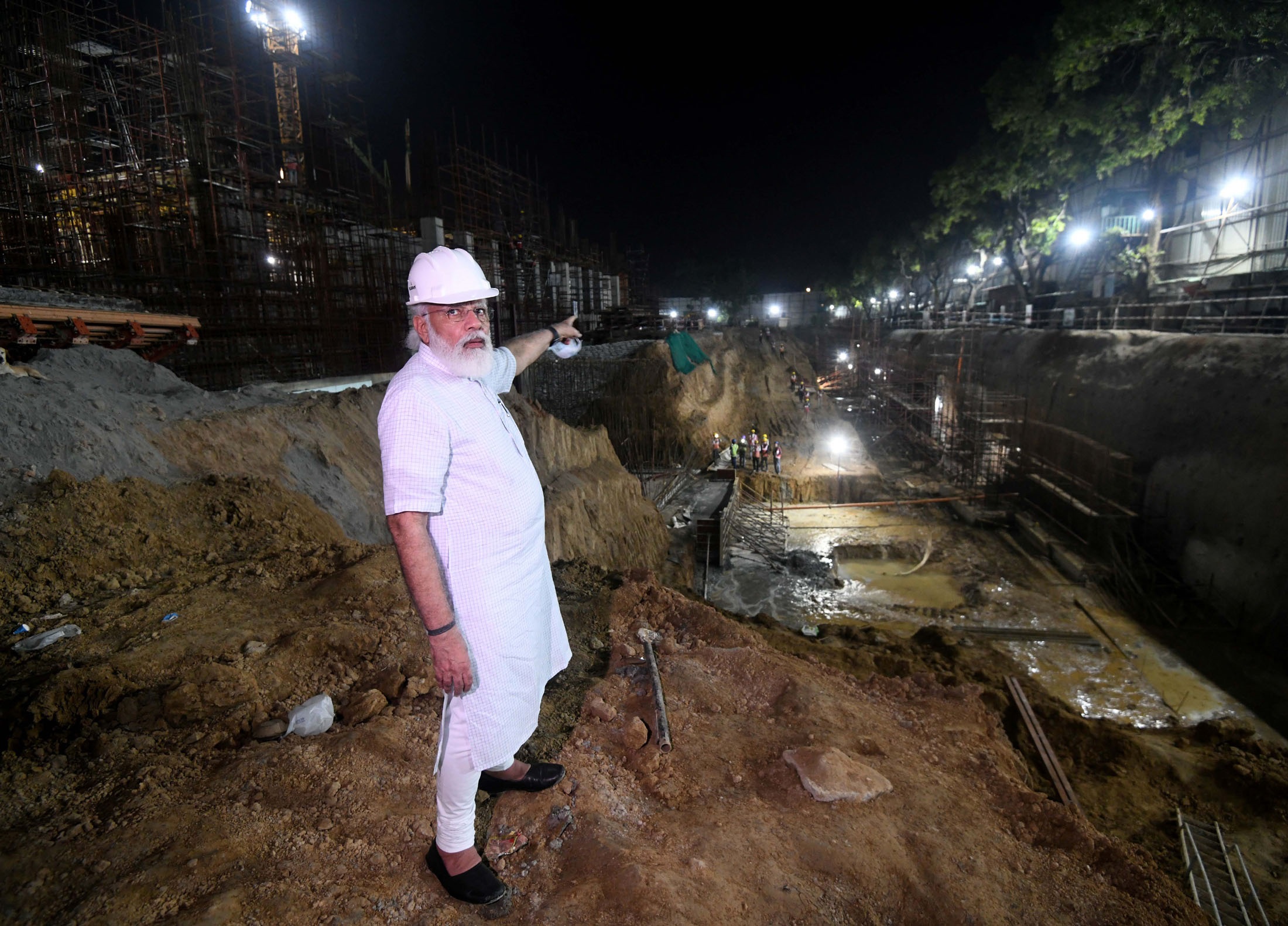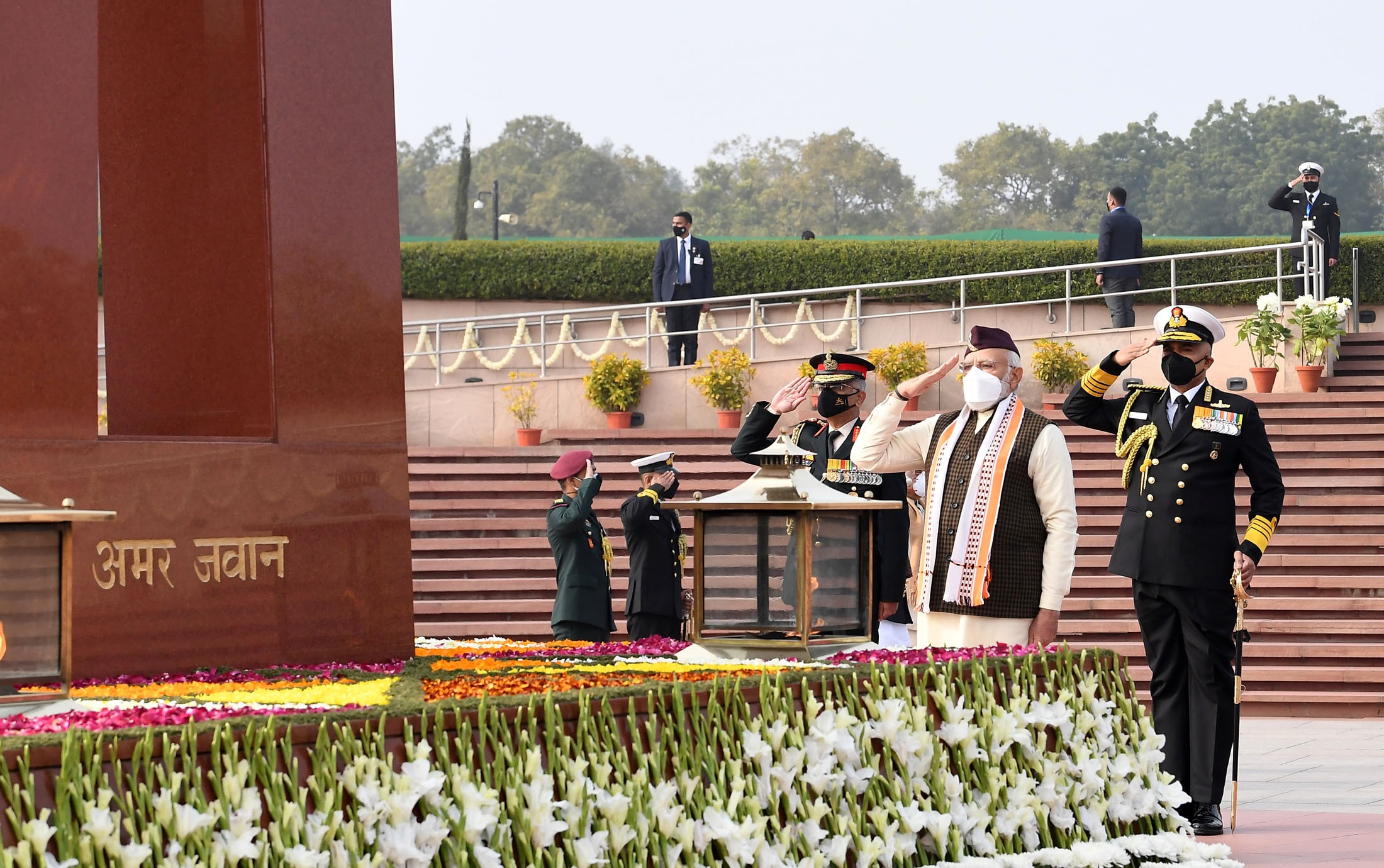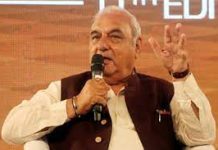
In the BJP’s opinion, the country has had an overdose of the Nehru-Gandhi legacy and sooner these distortions are corrected the better. And for that, even if a few monuments are razed to the ground so be it.
Soon after coming to power in 2014, Modi had ruled that leaders above 75 should not hold any administrative posts in Government.
Modi would turn 75 years in 2025: a year into his third term, in case the BJP returns to power in 2024. Chances are that by “popular demand”, he could be asked to continue and Party MPs may “compel” him to break the rule he himself formulated.
Irrespective, Modi is looking at the big picture: the picture of India remembering him after he demits office. If things go his way, he would rather be remembered as a statesman than a mere Prime Minister .
This, one would agree, is a good strategy given that being Prime Minister is a job while graduating to a statesman is akin to an icon. That Modi wants to be counted amongst world leaders rather than being confined as a national hero is a given. On his count, one can neither fault nor single him out because ambition has no limits.
Modi’s politics can be split vertically: one is his inherent need to make India enviable: whatever the route may be.
On that score he has fared well because however much one may slam him, even the naysayers would agree that under Modi’s leadership India has created an enviable space on the world stage.
That apart, his government is in a pro-active mode working 24×7 to make Modi’s dreams come alive. His pro-poor initiatives be it toilets for women or replacing smoking chulhas with gas connections for the poor cannot be undermined. One has to give it to Modi that he not only had the sensitivity to fathom the odds rural women battle, but went that extra mile to ensure that things improve for them. However, all this being canceled by BJP’s divisive politics is another matter.
This is just one part, the other being Modi’s intense desire to leave an indelible stamp on History.
On this, he has a two-pronged strategy. The first is to build as many monuments and statues that will echo the “Modi did this” sentiment and the other to erase the Nehru Gandhi legacy for good.
Simply put, this means that the future generations will witness an imprint of Modi’s vision be it by way of the Statue of Unity, so far, the tallest in the world, the Kashi Vishwanath Corridor, the Central Vista project or the latest National War Memorial at India Gate.
Both the Central Vista and National War Memorial are mired in controversy though for different reasons.
The National War Memorial has been in the news as a run-up to this year’s Republic Day celebrations. The focus: the eternal flame and the surprise the Modi government sprung on the people of India.
The National War Memorial stands tall behind the canopy at the India Gate complex. It is dedicated to soldiers and unsung heroes who lost their lives during different wars and military operations since India’s Independence. Names of 25,942 soldiers are inscribed in golden letters in the Memorial which was inaugurated by Prime Minister Modi in 2019.
Pitch this against the India Gate Memorial, built by the British in memory of the soldiers of the British Indian Army who died during the First World War.
In one sense, the National War Memorial fills the gaps in the India Gate Memorial which is essentially British in spirit and nature. The fact that Indian soldiers who fought for the country post-Independence, do not figure in the gallantry scroll is an omission that hurts every patriot.
Having said that, it must be pointed out that the nationalistic Indian spirit was embedded in 1971 when the Amar Jawan Jyoti or the eternal flame was placed under the canopy, following the Indo-Pak war which led to the creation of Bangladesh. This is thanks to Mrs. Indira Gandhi.
Since then, it has been customary for the Prime Minister to place a wreath at the Amar Jawan Jyoti before the Republic Day parade. Prime Minister Modi, too, has followed this tradition since he took over.
Figuratively speaking, it is this flame that is currently under fire.
Clearly overturning the earlier decision of the eternal flame continuing where it has been for the last fifty years, the Modi government has now “shifted” it to the adjoining Memorial ahead of this year’s Republic Day. No longer would obeisance be paid under the canopy but ceremonials would shift to the National War Memorial.
This has ignited passions with many questioning the decision as an attempt to erase History.
For optics the Government did not douse the flame. Cameras panned on the “merger” ceremony which in simple terms entailed the existing flame mingling with the new one and being ceremonially carried to the War Memorial to be lit eternally, in its new home.
Whether it has merged or mingled ending the old and new demarcations is mere technicality. The truth of the matter is that the old flame is non-existent and a new one stands bright in the National War Memorial which has Modi government’s imprint.
However, one cannot deny the fact that the Modi government did complete in three years what the erstwhile Congress could not in 60 years.
The proposal for a Memorial was languishing since 1960. But it was not till 2006 that the Congress headed government finally woke up to its need but did not see it through. Once Modi came to power, the government cleared the proposal within a year and it was inaugurated before its first term ended.
Despite this the government is in the eye of a storm for shifting focus from the Amar Jawan Jyoti and making the Modi-driven Memorial the center-piece. The jury is still out on whether it was necessary to douse one flame to make way for the other or allow both flames to co-exist.
Politically, cynics see an underlying message: one which reiterates that the Nehru-Gandhi legacy is exaggerated and needs an exit route. The Congress, it is felt, has appropriated History and made it Nehru-Gandhi centric, pushing out all others including Sardar Patel and Netaji Subhas Chandra Bose.
Credence is lent to this by Modi’s remarks during an event in Gujarat that the Congress government constructed new things only “for a few families from Delhi” while his government is building monuments of national importance. The country, he added, is leaving behind narrow thinking and building new places of pride.
In this context, Modi’s latest move to have Bose’s statue installed at India Gate has earned kudos: “This” the Prime Minister tweeted, “would be a symbol of India’s indebtedness to him”. If there was angst at the dousing of the flame, Bose’s resurrection has won hearts.
As for narrow thinking, Modi perhaps spoke a half truth. However much he may try to sell his selfless story of nationalism, the fact remains that it smacks of self-obsession, his aversion to the Nehru-Gandhi legacy and an attempt to erase anything and everything associated with India’s first family, as it were. The result: the government following a destroy first, build later policy.
A case in point is the Central Vista Redevelopment project, that entails a revamp of the area near Raisina Hill. Built during colonial rule, the government plans to demolish important landmarks, rebuild several government buildings and construct a new Parliament.
The iconic North and South blocks will be converted into museums and the existing Parliament building rendered redundant, as per plan.
Critics, including the Congress, see this as tampering with History while Modi loyalists aver that the existing structure is in a dilapidated condition and to quote the Government “showing signs of distress”.
Slamming the Congress for its “double-speak”, the Government said that the idea for a new Parliament was mooted by Congress’s Meira Kumar, when she was Lok Sabha Speaker. However, while she had approved the construction, what she had not bargained for was a complete transformation as proposed by the Modi government.

For instance, the new Parliament would be bereft of the iconic Central Hall that has witnessed historical moments including Jawaharlal Nehru’s ‘Tryst with Destiny’ speech and intense debates during the drafting of the Constitution.
Parliament apart, the Central Vista project will perhaps rob India Gate of its essence, particularly with government offices dominating, an average Delhiites favourite getaway. Worse still, many buildings in and around would be razed to the ground including the National Museum, Vigyan Bhawan, the Jawaharlal Nehru Bhawan among others.
The National Museum is home to historical artifacts; the Vigyan Bhavan has hosted several national and international conferences including the Commonwealth Heads of Government Meeting or CHOGM and the Non Aligned Movement or NAM summit; the Jawaharlal Nehru Bhawan currently houses the External Affairs Ministry and so on and so forth.
If this fits into the Modi government’s strategy to destroy and build, then doing away with 7, Race Course Road later renamed as Lok Kalyan Marg, could have something to do with erasing the Gandhi imprint. It may be recalled that ‘7 RCR’ as it was popularly known, was built for former Prime Minister Rajiv Gandhi in 1984. In later years, it was designated as a permanent residence of the Prime Minister of India.
Equally, the Indira Gandhi National Centre for Arts or the IGNCA would also be done away with. A resource Centre to study arts, the IGNCA was set up by Rajiv Gandhi in the memory of his mother, Indira Gandhi.
While on Rajiv Gandhi, it was Prime Minister Modi who renamed the coveted Rajiv Gandhi Khel Ratna award after hockey wizard Major Dhyan Chand. While it was a befitting tribute to the country’s well-known sportsman, there was seemingly a pattern to this. The fact that Rajiv Gandhi’s name was dropped to fit in Dhyan Chand’s did not go unnoticed.
It is in the same strain that there is a concerted effort by BJP MPs to push the Children’s Day to December 16. This would coincide with the martyrdom of Sikh Guru Gobind Singh’s two sons. As of now Children’s Day is celebrated on November 14, the birth anniversary of India’s first Prime Minister Pandit Jawaharlal Nehru. If the Government complies, then Children’s Day too will be without the Nehru-tag.
However, critics see a method in this madness. In the BJP’s scheme of things, the country has had an overdose of the Nehru-Gandhi legacy and the sooner these distortions are corrected the better. Equally, the British hangover that Indians suffer from must make way for Indian-ness. And for that, even if a few monuments are razed to the ground so be it. It is this double-punch that India’s current government, headed by Modi, is all set to deliver. That this may besmear Modi’s ambition of emerging a statesman is another matter.













